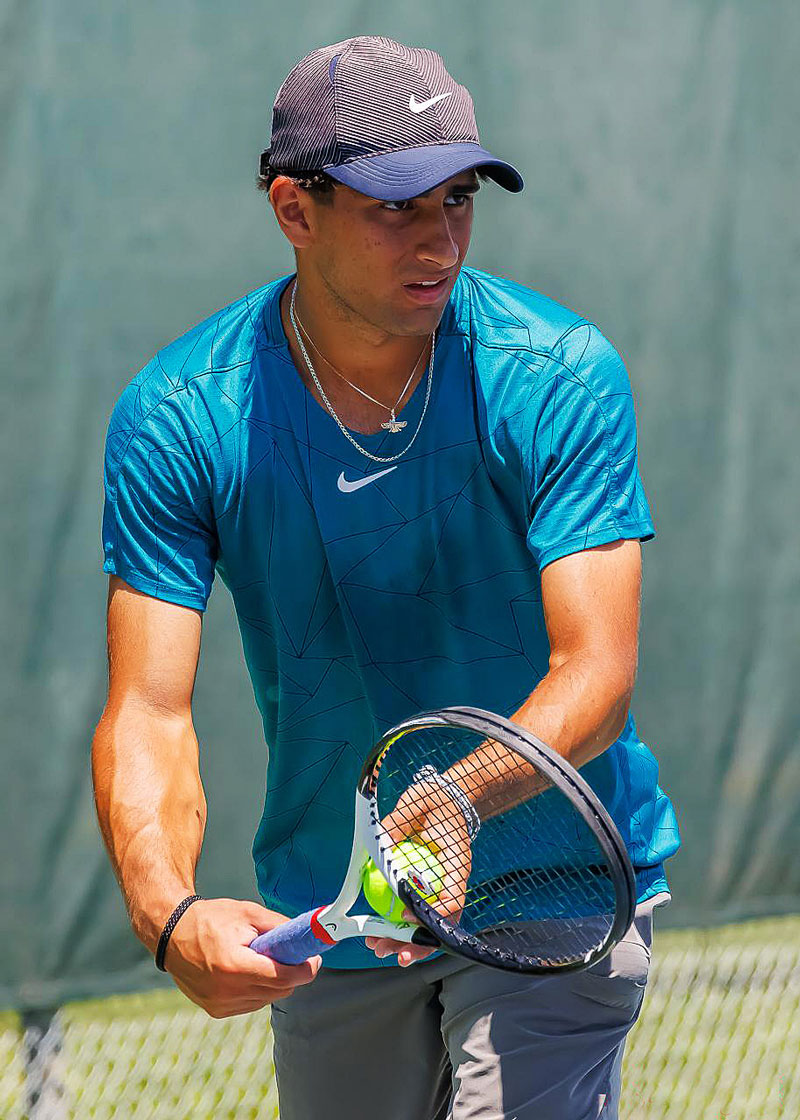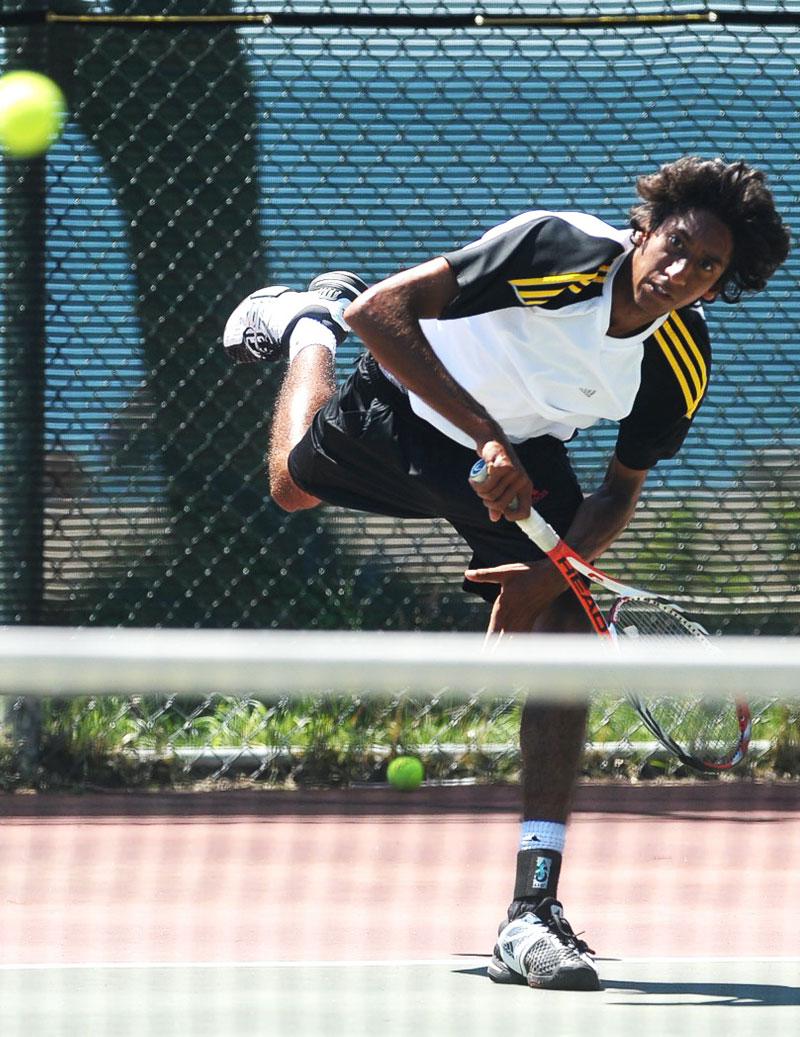

Are you one of the growing number of players wanting to get more competitive with your tennis? Do you want to move on from pick-up games to playing league or team matches, or even entering local or provincial events?
'The Competitive Edge' by lifelong player and coach Adrian Coles, features easy to digest tips and strategies to help keen recreational competitors play smarter. Improving stroke technique certainly helps but that requires a great deal of deliberate practice. A quicker way is to sharpen tactical skills whilst still using the strokes you've already got! He will cover topics often overlooked or even glossed over in on court instruction when hitting lots of balls is what is appreciated most.
This ONTENNIS exclusive series is a must-read for anyone who plays tennis at the recreational level and is interested in optimizing their match-play competitive experience. To access the other stories in the series, visit www.ontennis.ca.
No-Fault Insurance! - Developing Serve Confidence!
Playing tennis usually involves hitting way more groundstrokes than any other shot. We learn forehands and backhands first, then do serves, almost as an afterthought! And this, in spite of the fact that the serve is considered to be the most important of all the shots! In a close match it often comes down to who can serve better in those big pressure points. Is it any wonder that it is our least used and least practiced shot that causes us the most anxiety? Top players realize it's importance, and insure they are best prepared to serve well when it counts. What can we do to develop more confidence in our serve? What things should we do to qualify for a No-Fault Insurance Policy?
Top players realize the importance of the serve and insure they are best prepared to serve well when it counts!
1. Hit More Serves!

Competence on a tennis court is a function of repetition. The more balls you hit, the more likely you are to improve. 8 time Grand Slam Champion Andre Agassi reportedly was made to hit 1 million balls a year when he was training as a junior! Do you hit enough serves? Do you practice it outside your regular games? (What to do in a dedicated practice session later).
At least try to hit more serves in your match warm ups. In a traditional 5 minute warm up, pros will spend 2 minutes hitting serves! In non-professional events a more lenient warm up time of 10 minutes may be allowed, where 3 minutes should be given over to serving.
Don't fall victim to ' First Ball In' Syndrome, where no warm up serves are taken, but you are allowed to miss your first attempt over and over till it goes in, but ONLY on the first point! This usually happens after too much time has been spent hitting groundstrokes, and walking to pick them out of the net! Try to be more disciplined in the warm up, and realize it pays to hit cooperatively. If you hit the ball so your opponent cannot control the ball back to you, YOU miss out on hitting enough balls! And that leaves less time to hit practice serves!
2. Hit More Second Serves
You only double fault when you miss your second delivery. How often do we practice our second serves? Certainly, fewer times than our first serves! It is often said that a player is only as good as their second serve! Developing confidence in your second serve often leads to feeling more confident on your first. So try more second serves in the warm up!
3. “Smart Start” Serving
Serving More important for recreational competitors than touring pros is the 'Smart Start'. Pros have spent enough time before walking on to the match court warming up physically, and mentally, as well as hitting on the practice court. They are ready to go, fully warmed up, able to play at their optimal level right from the start. For us non-pros regular life gets in the way, and we often have to forego any pre-match preparation so it is smart to 'build into a match'. You don't need to start in top gear, as they won't be playing at their best right away either!
Are you happy to just get the ball in, anywhere in the service box? Or do you aim a specific type of serve to a specific spot, at a specific speed? Top players know their strengths and weaknesses. They know their best serve placements, and their most difficult. Do you know yours? What is your most reliable serve from the Deuce court? What about the Ad court?
Carefully choose the spot and the pace. The 'body' serve is the least risky and challenges the receiver to move away from the ball quickly. The 'wide' serve may create a big gap to hit into on the next shot, but it gives the receiver a chance to hit a wide return which may cause you trouble. It is a risky serve, which needs to be hit close to the singles sideline to be effective. The 'T' serve has little room for error sideways and doesn't leave a big gap for the next shot, but can be effective if hit hard enough.
The 'Smart Start' sees you hit your most reliable serves at maybe 70% speed, given your opponent is not grooved in returning yet! The body serve is a great option. It is risky to aim to hit a service winner or ace early on. You learn less about your opponent's capabilities if they can't return it, and you put pressure on yourself to keep doing that! A few times why not try to hit a spin serve as a first serve. Maybe your opponent has more difficulty judging the pace and movement! And of course you are practising a serve you might need on big points.
4. Big Point Serving
It is all too easy to forget the score when playing without an umpire, but smart serving demands you know how big the point to be played is. (Refer to the article 'Point Blank' in the archive.) Are you keeping a mental note of which serves are working well, which serves pose the greatest difficulty for the receiver?
You may feel some pressure on a big point, 0-30, 15-30, on break points, on set points for example. Remember your opponent will probably be feeling pressure too! Give your foe the opportunity to make an error by not overplaying your serve. A safer first serve, although maybe not your best, will still be better than a second serve, especially in this situation. This reduces the risk of serving a double fault. Don't give them a free point!
5. Deliberate Practice

Specific serving practice is recommended. Practice makes P......Progress! One of the advantages of practicing your serve is that you don't need a partner! Set aside some extra time, other than your regular games. Rather than discard used tennis balls, collect enough to take to the practice court. Use the ball tubes as targets for better feedback! And practice from both sides! And maybe more on the 'Ad' side, a more difficult angle to hit, with 3 game points compared to one on the 'deuce' side. And of course, serve both first and second serves!
Doing figure 8 shadow swings, (without hitting the ball) not only warms up the shoulder but helps develop a smooth serving rhythm. Do this anywhere, before going on court, or whilst you are waiting.
Develop Rituals. Top players have rituals, habitual actions before serving. You might see them adjust clothing, bouncing the ball, using a towel, bouncing on their toes etc. Why do they do these things? To make sure they are completely ready to serve and are not serving out of anger or without thought. A human trait is to try to remove ourselves as quickly as possible from an uncomfortable situation, so we tend to rush our serve when we feel pressure.
The greatest player of all time bounces the ball the most before he serves. If Djokovic does this then maybe it is a good idea! Whilst ball bouncing check you're not foot faulting. Breathe deeply to relax. Know the score. Plan your play. Pick a target. Make any adjustments. Consistency starts with developing these habits.
Avoid these common faults! The ball toss is to the serve as the set-up is to the groundstrokes. It is your position relative to the ball that determines the quality of the groundstroke. And so, it is the position and height of the ball toss that dictates the rhythm and quality of the service motion.
A smooth ball release, rather than throwing it up jerkily promotes a consistent toss. If you are unsure as to how far in front of you your toss is going, then let it fall to hit the ground. It is easier to judge it this way. Keep a straight arm when tossing. Bending at the elbow may send the ball too far back. Check your position when you finish. Are you off balance? Falling sideways? Backwards? A good toss encourages good court position and balance.
Take your time between first and second serves. Making 2 identical errors in a row shows there was no thinking time taken to make adjustments.
Conclusion
So, to sum up, try to pay more attention to your serve. It is more significant to your competitive level than you may appreciate. Your serve sets the tone for the whole rally IF you get it in! Are you going for too big a first serve too often and failing? Are you making too many faults by aiming too close to the lines? You may not be judged on the few occasions you actually score with “the Bomb”, but on the number of double faults you drop!
Spend more time hitting serves in the warmup, and if possible, in separate practice sessions. In tennis, as in life, it is better to serve than receive! You have invested much time and energy in playing, maybe now is the time to invest in no fault insurance!●